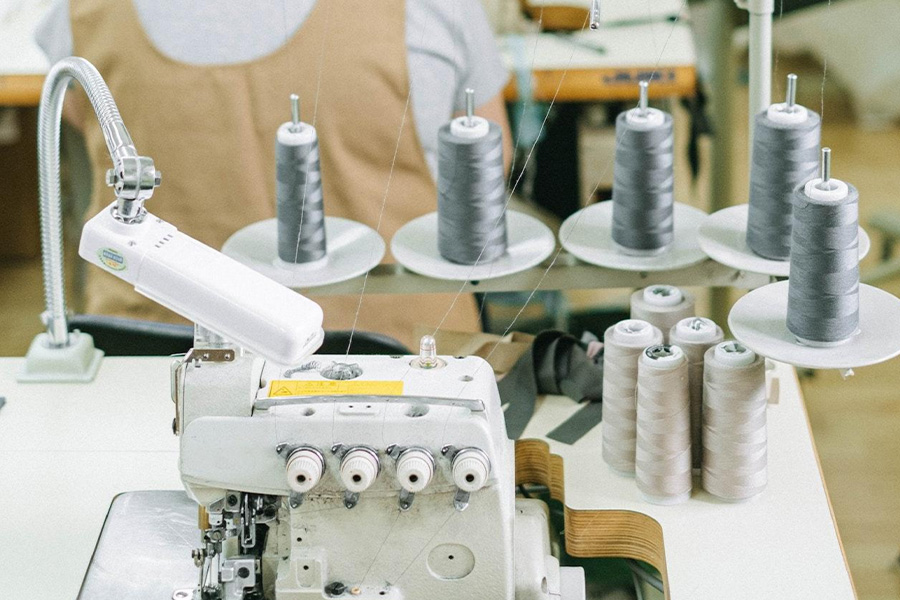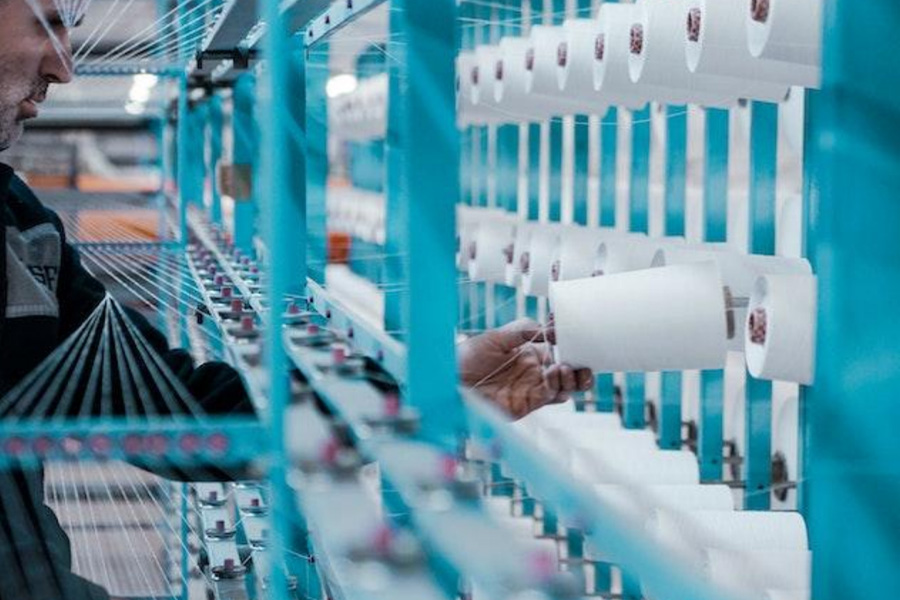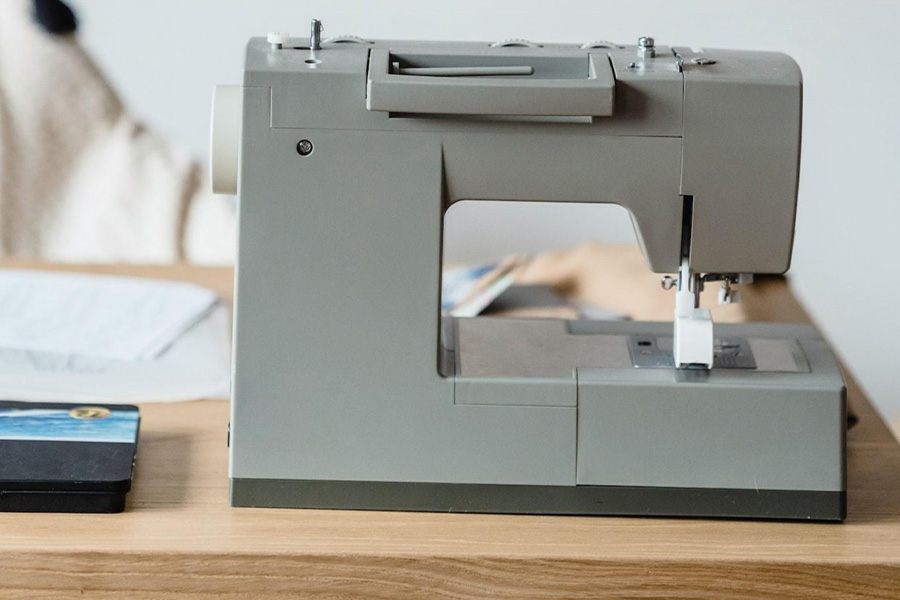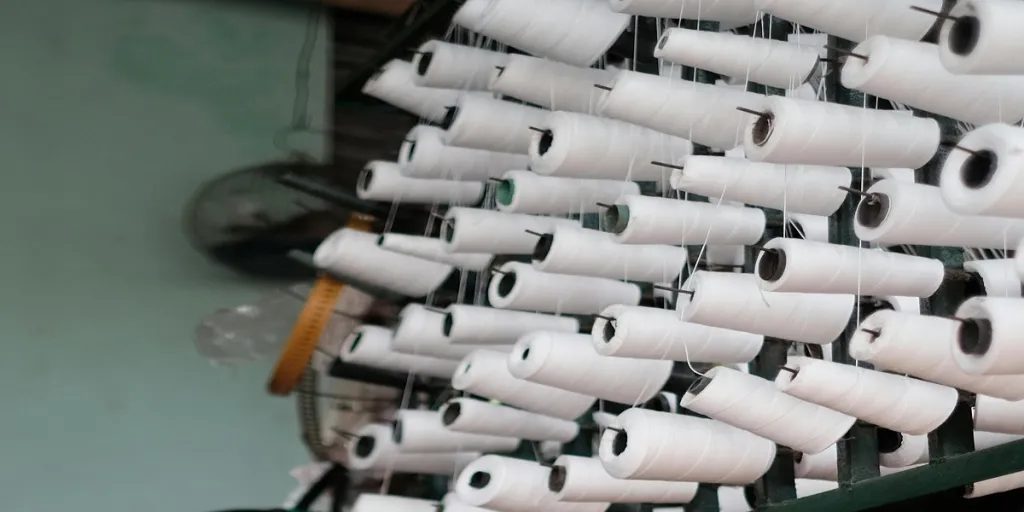Businesses are leveraging the most recent technological advancements to boost productivity and sales. From the expansion of digital printing to the increased reliance on AI, the textile industry is undergoing unprecedented changes. This article delves into the latest trends influencing how clothing is designed, manufactured, distributed, and marketed.
Table of Contents
Global textile machinery market
The advancements in apparel machinery
Popular trends in sewing machines
Latest trends in embroidery machines
Global textile machinery market

The global textile machinery market was valued at USD 25.73 billion in 2021 and is expected to grow at a compound annual growth rate (CAGR) of 6.7% to reach USD 38.92 billion by 2027. Several factors, including government policies and regulations, as well as technological advancements, have contributed to the industry’s growth.
Technological advancements include digital printing, nanotechnology, robots, and artificial intelligence (AI). New machinery is introduced to speed up various operations such as dyeing, printing, and sewing, saving money and increasing efficiency.
Furthermore, the growing demand for non-woven fabrics, which necessitate the use of specialized texturing and finishing machinery, will propel the textile market in the long run. Continue reading to learn about the most recent innovations.
The advancements in apparel machinery

The continuous improvement in apparel machinery has decreased the need for skilled labor, accelerating production and lowering costs. The traditional processes used in making garments can now be replaced with computerized methods for enhanced and efficient results. Here are some of the most significant developments.
Digital printing technology
Digital printing has become a valuable tool in the textile industry because it makes manufacturing and designing more efficient, cost-effective, and creative. Manufacturers can now incorporate 3D apparel designs using various tools, including computer-aided design (CAD). These tools are also helpful for nesting, marking, grading, pattern embedding, and determining fabric consumption. Manufacturers can also create 3D models to accurately assess fits, patterns, and dimensions.
Nanotechnology: Manufacturers can use this technology to manipulate the fabric to achieve the desired textile properties. For example, nanoparticles coat textiles to create highly active surfaces capable of blocking bacteria and UV rays. Nanotechnology is also used to make water-resistant, fire-resistant, long-lasting, and wrinkle-resistant fabrics. This technology is instrumental in manufacturing protective garments for service workers such as firefighters and medical personnel.
Other advancements in the apparel manufacturing industry include laser printing technology, which allows for more precise and quick printing of designs. Pleating is another process that has been simplified and accelerated in textile manufacturing using the latest pleating machinery. And lastly, knitting machines are widely used to produce knitted fabrics in large quantities.
AI and machine learning
AI technologies are revolutionizing the apparel sector in all areas, including design, shipping, marketing, and sales. Machine learning algorithms are utilized to enhance efficiency in manufacturing, including collecting data, performing skilled tasks, and predicting consumer behavior and customer sentiment toward products.
Carding, lap formation, ring spinning, and packing can all be sped up with AI-enabled machinery. These processes are carried out with minimal human intervention, lowering costs and improving quality. AI has reduced grading errors by 60%, resulting in more accurate textile grading.
Automation
Automation can help apparel companies release collections faster than their competitors by speeding up the manufacturing process. Furthermore, the database created by the automated workflows is used as a reference to develop auto-assigned tasks, validate processes, and notify users.
Standard technologies such as robotic process automation (RPA), product information management (PIM), and product lifestyle management (PLM), among others, are used to automate product designs.
Robots
Robots were traditionally designed to perform repetitive and time-consuming tasks on factory assembly lines. However, robots today are equipped with cutting-edge technology, making them highly programmable and collaborative. These robots can potentially replace human workers in hazardous tasks.
However, robots in the textile manufacturing sector have come with their difficulties. Cutting fabrics, for example, has been a simple task for robots, but sewing was proven difficult. In response, companies have developed Sewbots, outfitted with robotic arms and vacuum grippers to guide fabrics through a sewing machine more accurately, thereby saving money.
RFID technology
Radio frequency identification device (RFID) has revolutionized the apparel industry from manufacturing to distribution and retail. The RFID tagging system provides quick and precise data on the location of various items, allowing the textile industry to save billions of dollars. RFID tags are small wireless chips with radio circuits that encode digital data. There are two types of RFID tags. The first type has its own power source, whereas the latter is activated by a radio frequency scan of the reader.
Even though RFID tags are more expensive than bar codes, they can be read from a distance and store more information than a bar code system. Additionally, a group of items in a package can be scanned simultaneously rather than having to inspect each item individually as required by a bar code system.
Popular trends in sewing machines

Vision sewing: Decorative stitching necessitates precise manipulation of the fabric to achieve the desired effect. Because of the labor shortage and high cost of decorative stitches, vision sewing has emerged as a viable option. It can be integrated into traditional sewing machines with an industrial camera that captures images and directs mechanical actions by transferring them to the electronic programmable sewing machine. This process takes less time and requires almost no skill set.
Pedal-less sewing: The foot pedals are where operators spend the most time getting control of their stitching. However, pedal-less sewing machines with electronic stitch control are now on the market. Some of these machines work by using sensors to track the movements of the operators and then using the data to mimic those movements.
Automatic bobbin changer: When the bobbin thread on a sewing machine is completely consumed, the machine comes to a halt, necessitating a new bobbin. Automatic bobbin changers help achieve uninterrupted sewing as they can stock up to 8 bobbins in the exchange plate and can be integrated with SNLS machines.
Real-time monitoring: Textile industries can now monitor production status in real-time thanks to digitalization. The smart sewing machines are linked to a network that can be accessed via smartphone anywhere in the world. This real-time status aids in the detection of impediments during production.
Latest trends in embroidery machines
Multi-needle machines: Single-needle machines have been a significant limitation in the industry, with many businesses seeking innovative machines to address this problem. With the ability to embroider multiple colors without having to change the thread manually, multi-needle machines are now more productive.
When embroidering fine details on specialty fabrics, users can now preset different threads and needles, eliminating the need to stop the machine to make the necessary changes. The greater the number of needles present, the more one can prepare, thereby saving time.
Built-in file management system: The most recent models include a file management system that allows users to organize all embroidery files saved on the machine’s memory. This will enable individuals to access the most popular embroidery designs without transferring the data via USB every time.
3D design views for enhanced visibility: Some new machines include an optional camera positioning device that allows users to view the ongoing project from all angles, including the machine’s head. The equipment also has enhanced graphics that strengthen the 3D design view, allowing operators to see the design in greater detail.
Conclusion
The textile industry has seen tremendous growth in apparel manufacturing machines, with an increasing reliance on automation and artificial intelligence. These advancements will lead to a brighter future, lowering costs and increasing productivity and profit. Visit Alibaba.com to learn about the latest machinery reshaping the manufacturing industry.




